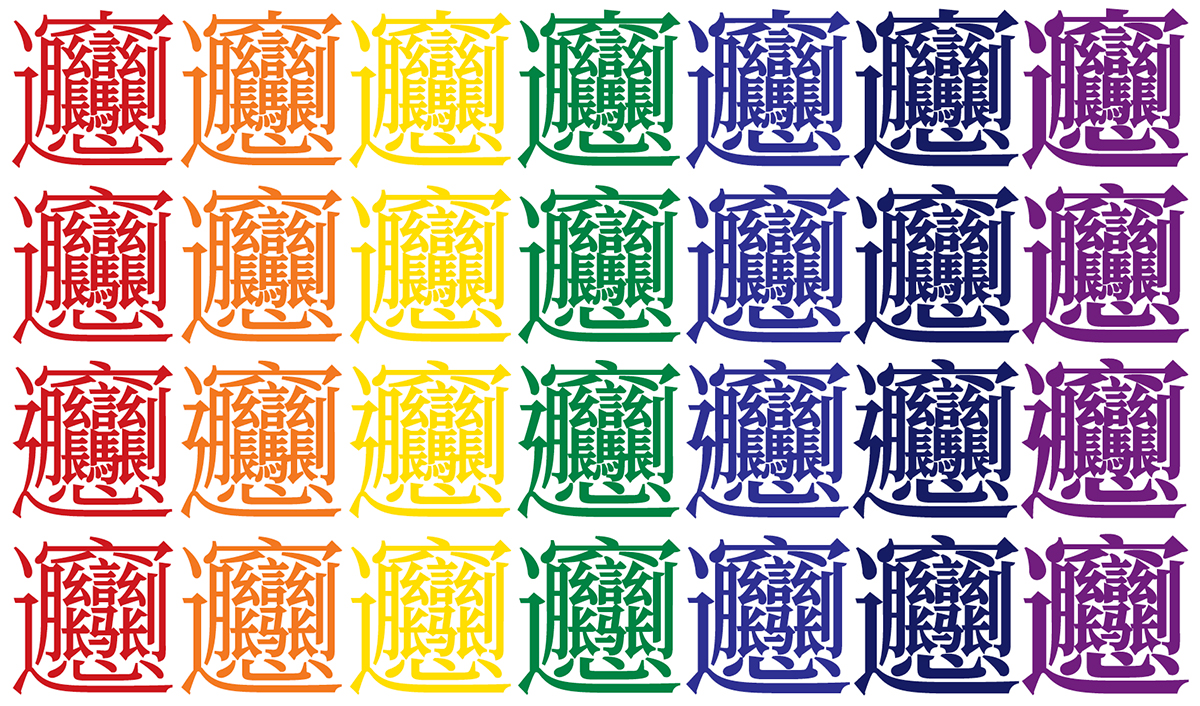
Besides being the world’s first open source serif-style Pan-CJK typeface families, the Adobe-branded Source Han Serif and the Google-branded Noto Serif CJK also represent the first broad deployment of two highly-complex and related ideographs that are in the process of being encoded. Their glyphs are shown above in all seven weights. Although it may be hard to believe, the fourth line illustrates the simplified version.
This ideograph is pronounced biáng, and is used in the name of a popular type of Chinese noodle.
Both ideographs are included in IRG Working Set 2015 as UTC-00791 (traditional) and UTC-01312 (simplified), and are expected to be included in Extension G. You can read more about the submission in this article.
These ideographs are not yet encoded, but I wanted to include them in Source Han Serif and Noto Serif CJK. The reason why these glyphs were designed in the first place was to stress-test the Ideograph Element Library that was used to design the glyphs for the tens of thousands of their ideographs, and also to be used for the UTC’s submission for IRG Working Set 2015 (aka IRG N2091). Yui Yoshitomi (吉富ゆい), a former member of our design team, designed the JP and CN glyphs for UTC-00791 and the CN glyph for UTC-01312, and Changzhou SinoType designed the HK glyph for UTC-00791 based on the existing CN glyph. The Source Han designer, Ryoko Nishizuka (西塚涼子), performed the final refining of the glyphs.
Anyway, I decided to pseudo-encode them through the use of their IDSes (Ideographic Description Sequences) and the 'ccmp' (Glyph Composition/Decomposition) GSUB feature. The technique is described in this article. The IDSes are ⿺ 辶⿳穴⿰月⿰⿲⿱幺長⿱言馬⿱幺長刂心 (traditional) and ⿺ 辶⿳穴⿰月⿰⿲⿱幺长⿱言马⿱幺长刂心 (simplified). Please note that I inserted a U+200A HAIR SPACE character between the first two characters in each IDS in the previous sentence, to ensure that they continue to display as 19-character IDSes even after these glyphs are added to Source Han Sans (and the Google-branded Noto Sans CJK).
Enjoy!

What impressive glyphs! It’s fun to look down the columns, and try to spot the differences between the variants.
Very impressive Dr. Lunde! The glyphs are beautiful.